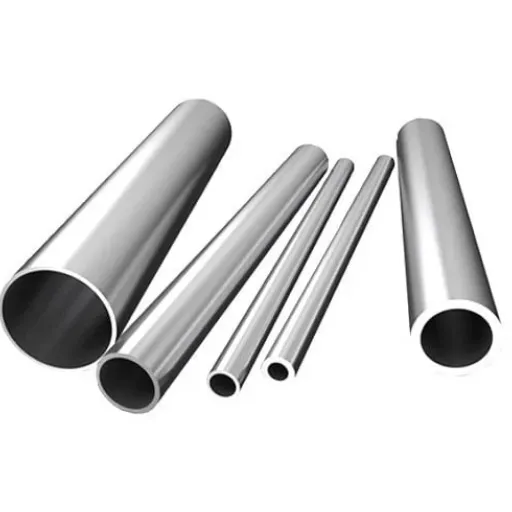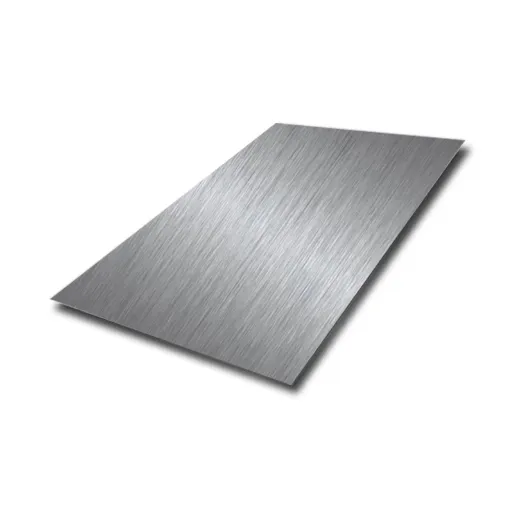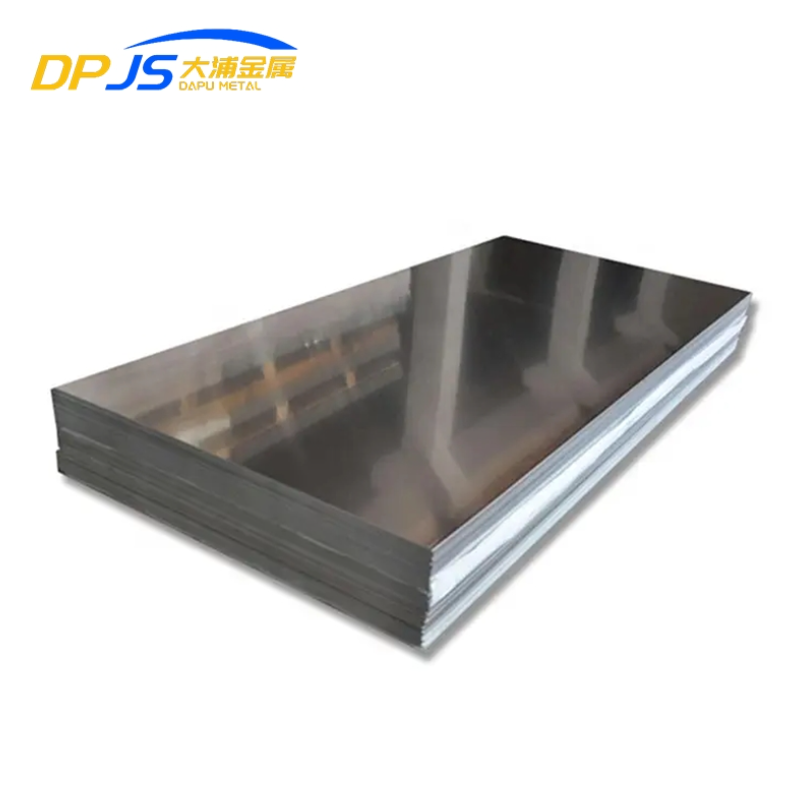The 316 stainless steel price has remained a major concern for the manufacturers, dealers, and procurement professionals involved in the automotive, marine, chemical processing, and construction industries. 316 stainless steel is known as the most specified austenitic grade with a commendable corrosion resistance combined with excellent mechanical properties, thereby making the market price a key factor in strategic sourcing decision-making. The objective of this all-encompassing study is to help stakeholders cope with this crucial material market by investigating present pricing, historical trends, and the forthcoming future.
Product Overview
Full Materials Name: 316/316L Austenitic Stainless Steel (Grade with Molybdenum Element)
Common Specifications and Grades:
- ASTM: A240 (plate/sheet/strip), A276 (bar/shapes), A312 (pipe), A479 (forgings)
- EN: 1.4401(316), 1.4404(316L), 1.4432(316L with tighter tolerances)
- JIS: SUS316, SUS316L
- UNS: S31600(316), S31603(316L – the low carbon variant)
Typical Chemical Composition (weight %):
| Element | Range |
|---|---|
| Carbon (C) | 0.08 max (316) / 0.03 max (316L) |
| Chromium (Cr) | 16.0–18.0 |
| Nickel (Ni) | 10.0–14.0 |
| Molybdenum (Mo) | 2.0–3.0 |
| Manganese (Mn) | 2.0 max |
| Silicon (Si) | 1.0 max |
| Iron (Fe) | Balance |
Mechanical Properties:
- Tensile strength: 535–630 MPa (75–90 ksi)
- Yield strength: 205–310 MPa (30–45 ksi)
- Elongation: 40% Min. in 50mm
- Hardness: ≤217 HB (≤95 HRB)
- Modulus of elasticity: 193 GPa
Typical Commercially Available Sizes:
- Sheets/Plates: 0.5mm–100mm thick; up to 3000mm wide
- Coils: 0.3mm-6mm × 1000-1500mm wide
- Bars: 6mm-300mm Round dia.; Various profile sizes
- Pipes/Tubes: 6mm-600mm O. D. with Schedule 5S through XXS
- Wire: 0.1mm-16mm diameter
Main Applications and Industries:
- Marine installations (excellent resistance to pitting) and offshore platforms
- Chemical and petrochemical processing equipment
- Pharmaceutical and food processing machines
- Architectural fronts and coastal construction
- Automotive exhaust systems and convertors
- Medical implants and instruments for surgery
- Pulp and paper processing systems
Global Price per Kilogram (Current Snapshot)
International Starting Prices: USD 4.20–5.80/kg FOB (as of November 2025) now show a give-and-take in price stabilities between 2023 and 2024, juxtaposing short-term spikes in the other parenthesis across the curve. This has transpired against the backdrop of nickel corrections and normalized molybdenum supplies.
Reliable Price Sources:
1.Shanghai Metals Market (SMM) – November 12, 2025
- 316 cold-rolled 2B finish: CNY 32,500–35,000/tonne (US$ 4.50–4.85/kg FOB Shanghai)
- Premium above 304 grade: approximately 15–18%
2. MEPS International – November 2025 Report
- European 316L sheet baseline: EUR 4.20–4.60/kg ex-works (USD 4.45–4.90/kg equivalent)
- North American surcharge system: base price + alloy surcharge methodology
3. Argus Metals – Week of November 11, 2025
- Asian export 316 coil: USD 4400–4800/tonne FOB (USD 4.40–4.80/kg)
- Indian export grade: USD 4,200–4,500/tonne FOB Mumbai
CIF Premium to Major Importing Hubs:
- Rotterdam (Europe): +USD150–200/tonne( freight+ insurance)
- Los Angeles (West Coast USA): USD 120–180/tonne over origin
- Shanghai, China: Current prices, perhaps with a slight premium for imports
- Dubai, Middle East: USD 100–150/tonne over India/Asia purchases
- Santos, Brazil: USD 180–250/tonne over European/Asian lots
Regional Sales & Pricing in Key Markets
| Country/Region | Typical Price (USD/kg) | Main Suppliers | Local Taxes/Duties | Popular Specs |
|---|---|---|---|---|
| China | 4.50–4.90 | Tsingshan, TISCO, Baosteel | 13% VAT | 316L 2B cold-rolled, seamless pipes |
| European Union | 5.20–5.80 | Outokumpu, Aperam, ThyssenKrupp | 20–25% VAT, 0% duty (intra-EU) | EN 1.4404 sheets, welded tubes |
| United States | 5.40–6.20 | North American Stainless, ATI, Outokumpu | Anti-dumping duties 8–15% (varies by origin) | ASTM A240/A312, 2B and #4 finishes |
| India | 4.20–4.70 | Jindal, SAIL, POSCO India | 18% GST | SUS316L plates, industrial pipes |
| Southeast Asia | 4.60–5.10 | Imported (China, Taiwan, Korea) | 5–10% import duty + 7–10% VAT | 316 coils, precision tubes |
| Middle East | 4.80–5.40 | Re-exports from India/China/EU | 0–5% duty (GCC), 5% VAT | Marine-grade sheets, ASME pipes |
Regional Outlook:
China is the overwhelming leader with 55% of global production; hence, it can provide competitive pricing. However, the quality varies among suppliers. Tier-1 mills (Tsingshan, TISCO) demand premiums for their consistently controlled chemical compositions.
EU pricings, on the other hand, do reflect the high cost of energy and strict environmental compliance (CBAM carbon border adjustment). The European Union (EU) price tag is justified due to immaculate surface condition and absolute adherence to tolerance levels.
United States pricings contain a protectionist mark against section 232 that is aimed at third countries, especially Asian products, including China; this entails a 15%-25% price advantage versus similar Asian counterparts for U. S. buyers.
India is now a low-cost export center, mainly for commodity-grade 316L; nevertheless, the average delivery period often extends to 8-12 weeks for specially ordered specifications.
Historical Price Volatility (Past 24 Months)
Monthly Average Price Trend (316 Cold-Rolled Sheet, USD/kg FOB Asia)
Nov 2023: ████████████████████ $5.80
Dec 2023: ███████████████████ $5.60
Jan 2024: ██████████████████ $5.40
Feb 2024: ████████████████ $5.00
Mar 2024: ███████████████ $4.80
Apr 2024: ███████████████ $4.75
May 2024: ██████████████ $4.60
Jun 2024: ██████████████ $4.55
Jul 2024: ███████████████ $4.70
Aug 2024: ████████████████ $4.85
Sep 2024: ████████████████ $4.90
Oct 2024: ████████████████ $4.95
Nov 2024: ████████████████ $5.00
Dec 2024: ███████████████ $4.80
Jan 2025: ███████████████ $4.75
Feb 2025: ███████████████ $4.70
Mar 2025: ██████████████ $4.60
Apr 2025: ██████████████ $4.55
May 2025: ███████████████ $4.65
Jun 2025: ███████████████ $4.70
Jul 2025: ███████████████ $4.75
Aug 2025: ███████████████ $4.70
Sep 2025: ███████████████ $4.65
Oct 2025: ███████████████ $4.68
Nov 2025: ███████████████ $4.70Peak, Trough, and Change:
- 24-Month Peak: USD 5.80/kg (November 2023)
- 24-Month Trough: USD 4.55/kg (April-June 2024, April 2025)
- Change from Peak: -19.0% up to now
- Current Period: ±3% band since May 2025
Main Key Events Related to the Big Price Variations:
- November 2023, Nickel Rally: Indonesia export restrictions and speculative buying brought LME nickel to $20,000 per tonne, inflating 316-grade stainless steel to 24-month peaks.
- February to April 2024, The Collapse of Demand: Chinese real estate sector contraction and European manufacturing recession shrank by 12–15% consumption, thus forcing excessive price corrections.
- July 2024, SuHge in Molybdenum Supply: New capacity taken into mining in Chile and resumption of productivity in China lead into moly oxide falling back in the availability of the Mo premium component in 316 prices.
- 2024-October: Amendments in U. S TARIFF: The U. S. Department of Commerce decided on adjustments to antidumping duties upon the arrival of Vietnamese and Indonesian 316, thereby creating a division in prices for a short while within their region.
- 2025-March: Normalizing energy costs: Natural gas prices in Europe have skyrocketed, allowing mills to reduce the premiums, thereby closing off the regional gap; energy costs are starting to stabilize.
Short-Term & Long-Term Price Trends
Next 3–6 Months Forecast (December 2025 – April 2026): neutral to slightly bullish
Main Drives:
- Nickel stabilization: LME nickel trading in $16,000–18,000/tonne range provides predictable raw material costs
- Seasonal demand recovery: Traditional Q1 restocking in Northern Hemisphere could lift the prices 3-5%
- Chinese Production Discipline: Capacity Rationalization efforts by Major Mills may prevent oversupply
- Molybdenum watch: Any production disturbances could instantly add $200-300/tonne to 316 pricing
- Consensus View: SMM projects the 316 cold rolled to trade between USD 4.60 and $5.10/kg FOB Asia through Q1 2026, and EU and U. S. markets shall maintain their traditional premiums.
2026–2028 Outlook: moderately bullish with structral support
Structural Aspects:
- Green Hydrogen Infrastructure: For the swift installation of electrolysis and hydrogen storage systems, they will require corrosion-resistant alloys for not more than the 8-12% forecasted yearly growth of CRU Group for 316/316L in this niche.
- Offshore Wind Expansion: The maritime environment uses quite a right amount of 316 fasteners, pipe systems, and structural components for offshore wind expansion, with the expected cumulative capacity over 150 GW by 2028.
- Pharmaceutical Manufacturing Onshoring: As supply chains become more resilient in a post-pandemic world, pharmaceutical manufacturers in the West are investing in manufacturing equipment that continues to see rising demand within 316L grade or chemical processing.
- Electric Vehicle Battery Production: These systems are using 316 stainless steel for cooling systems and structural components in EV battery manufacturing, enforced for superior thermal management and properties ensuring a longer period.
- Carbon Border Adjustment Mechanism (CBAM): The European Union intends to shift the competitive landscape by carbon-pricing all imports at a rounded figure of USD 50-150 per metric ton for non-EU 316 products towards 2027.
Industrial Analyst Quotes:
- World Steel Association (2025 Outlook Short): “The demand for special stainless, especially the molybdenum-free ones, is set to see growth in the range of 1.5% to 2% ahead of the growth marked by the carbon ones until the year 2027. It will be brought about by the promotion of energy transition and infrastructure investments.”
- According to the CRU Stainless Steel Service (Q3 2025): “If molybdenum supply starts to tighten and the science and energy sectors begin to represent a significant part of global stainless-steel demand, we expect 316 to trade at a sustained premium over 304, which could be expected to increase from 15–18% today to 20–22% by the close of 2026.”
Price Projections for the 2026–2028 Period:
- Bear: USD 4.80–5.40/kg (continued ongoing fundamentals)
- Base: USD 5.20–6.00/kg (moderate demand growth and managed supply)
- Bull: USD 5.80–6.80/kg (high spending on decarbonization, plus high constraints on supplies)
Buying Tips & Risk Hedging
Minimum Purchase Quantities and Delivery Terms:
- Common-product Specs (2B cold-rolled sheet, welded pipes): MCQs of 5-10 tonnes, delivery in 4-6 weeks
- Sizes/Finishes as per customers: MCQs 15-25 tonnes, delivery in 8-12 weeks
- High precision or certified material: MCQs >20 tonnes, about 12-16 weeks from major European mills
- Spot Buys: Smaller lots can be made available (1-3 tonnes) at a premium of 10-15% through distributors
Terms of Payment:
- Normal: 30% advance, balance 70% against B/L copy or before delivery
- Offers after steady relationships: 30-60 days after first couple of purchases on credit
- LC: L/Cs are common for international contracts of over USD 100,000, with a transaction cost that goes between 0.5% and 1.5%.
- Cash discounts: cash discounts between 1% and 2% could be in effect for advanced settlements with some suppliers
Price Fixing Models:
- Firm Fixed Mills: Keep for 3-12 months the price of committed volume (usually based on an annual order of at least 100 tons). Great for integrated manufacturers with a predictable consumption pattern.
- LME Nickel Futures: The main component in 316 feedstock costs is nickel, up to 40–45%, so a hedge against LME nickel would shield against 60–70% of any possible price fluctuations. Great experience in commodity trading or the services of a broker may be required.
- Fixed-Price Purchase Agreements (PPAs): Larger consumers such as shipyards and chemical plants can discuss annually negotiated pricing that has quarterly true-ups based on published indices (such as MEPS or Argus).
- Distributor Inventory Program: In some cases, distributors offer contractual “buy-and-hold” arrangements that help customers lock in price but with incremental delivery over a 6- to 12-month period, aiding those with inadequate storage space.
Red Indicators of Fake and Poor-Quality Materials:
- Prices Too Good to Be True: A price that is greater than 10 percent below that of market averages is normally too low for quality material or incorrect in terms of chemistry.
- Vague Mill Certificates: Authentic MTRs must contain many things: heat number, full chemical analysis, and mechanical test results that are traceable to a specific batch of material
- 304 Material Classified as 316: The easy acid test (ferric chloride drop test) can quickly identify the molybdenum’s absence; insist on XRF verification for critical applications.
- New Marks or No Marks: Genuine mills engrave the product with a grade, heat number, and manufacturer identification.
- Suspiciously Short Lead Time: 316 on a particularly unusual order of-the-shelf material is very likely to be mislabelled or worse-still, scrap-based material of an uncertain pedigree.
- Refusal to Issue Compliance Documentation: EU 3.1 certificates; NACE compliance statements, or ASTM test reports are all readily provided by well-intentioned vendors.
Good Practice for Quality Assurance:
- Seek PMI (Positive Material Identification) testing for pivotal structural or pressure vessel applications
- Validate supplier registration through industry associations (IMOA for molybdenum content verification)
- Carry out receiving inspections comprising dimensional inspection and surface quality review
- Develop relationships with certified stockists representing major mills (Outokumpu, TISCO, ATI) as opposed to gray-market traders.
Conclusion
As for the late 2025 price of 316 stainless steel, one can witness a situation in transition—more stable compared to the radical situations in 2023-2024, where steel is put into a situation with a slight bias for appreciation, supported by the structural announcements of decarbonization and infrastructure investment. Potential buyers are experiencing a strategic inflection point: While the price is very low of historical nature, recent supply-demand issues-unresolved as of now-oblige more strategic procurement planning (CBAM, trade policy).
When navigating in this sort of a market, you are always trying to keep an eye on nickel and moly fundamentals at the moment they need, spread the risk with supplies from different regions, use some form of hedging appropriate to the organization’s risk appetite. In the alloy-grading markets, where the sense of trust that supply will be verified competently, reputational risk of running short of premium supply capacity well outweighs any margin price reductions with untrustworthy sources.
Procurement professionals must remain vigilant in the quarterly assessment of 316 stainless steel price trends against operations forecasts-and be prepared to fast-manage purchasing orders when the market cools down, to continue optimizing the total cost of ownership in the second half of this decade.
Sources Cited:
- Shanghai Metals Market (SMM) – November 2025 pricing data
- MEPS International – European stainless steel report
- Argus Metals – Asian stainless steel assessments
- World Steel Association – Short-Range Outlook October 2025
- CRU Group – Stainless Steel Service Q3 2025
- London Metal Exchange (LME) – Nickel futures data
- International Molybdenum Association (IMOA) – Supply analysis
Disclaimer: Prices and forecasts in this article reflect data available as of November 5, 2025, and are subject to change without notice. This analysis is for informational purposes and does not constitute financial, legal, or commercial advice. Always verify current spot prices and contractual terms directly with suppliers and industry pricing services.






